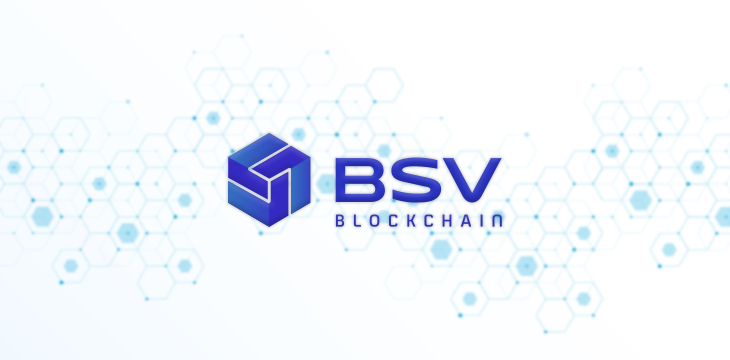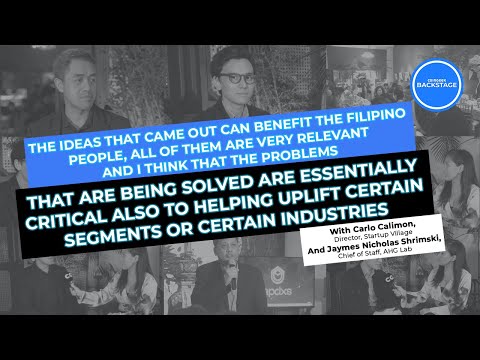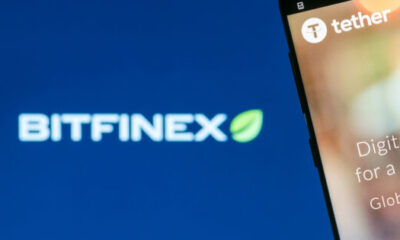News
BSV Blockchain: Building trust at scale

The BSV blockchain is a “secure and stable” peer to peer technology, designed for scalability and enterprise-level use cases, according to a new report by BSV’s Swiss-based custodian organization, the BSV Association, in collaboration with strategic management consulting firm Boston Consulting Group.
Titled “Navigating Digital Transformation: Building trust in an automated world,” the report outlined trust issues that the new digital age has created for businesses, how blockchain can address some of these issues, and real-world uses cases that demonstrate the advantages of applying the blockchain to the novel problems of life and enterprise in the age of artificial intelligence (AI), internet of things (IoT) and Web3.
In the last article in our series of deep dives into the report, we explore how and why the report posited BSV blockchain as the go-to technology to solve the trust problems of the new digital age whilst also looking at and hearing from a diverse range of businesses already utilizing the BSV blockchain.
Unique features
The report suggested that certain unique features of the BSV blockchain make it particularly well suited to the challenges of the new digital age and to adoption by enterprises. Specifically:
- Efficient scaling – The overlay networks and unbounded block size of BSV achieve 14,000 transactions per second (tps), and with the blockchain’s Teranode update, it seeks to reach more than one million plus tps. This would be “much faster than traditional payment processors such as Visa, who, by comparison, can execute only about 65,000 tps,” said BSV Association.
- Low transaction costs – The BSV blockchain offers a cost-efficient solution, with transaction fees as low as $0.0000006 (as of May 17, 2024). By comparison, the report suggested that Stripe, an online payment processing and credit card processing platform, has transaction fees of 1.5% to 3.25% of payment value plus a flat fee of $0.27.
- Resilience and reliability – According to the report, the BSV blockchain has been “reliably operating for more than 5 years and processed over 3.6 billion transactions.”
- Sustainability – On average, the BSV blockchain emits about 0.03kg of CO2 per transaction and consumes less than 500 MWh of energy daily. “This performance demonstrates greater energy efficiency compared to other Proof of Work (PoW) blockchains,” argued the report.
- Security – BSV blockchain is anchored in a “battle-tested” PoW mechanism and an unspent transaction output (UTXO)–based token model, this forms what the report called a “trustworthy and immutable blockchain architecture.”
- Regulatory compliance – BSV is, technically, not classified as a security and implements legal rules to govern its nodes.
On this latter point, the report quoted Cozen O’Connor legal firm, who said:
“The SEC has stated that Bitcoin is not a security under the federal securities laws in the United States due to its function as a substitute for fiat currency as a medium of exchange. The BSV Association maintains that BSV restored the Bitcoin protocol to its original design – and therefore its concept as a medium of exchange.”
The SEC comments were in reference to BTC. It has not commented on whether BSV is a security other than to suggest that all blockchains other than BTC are likely securities. However, considering what Cozen O’Connor pointed out, it may be fair to conclude that the SEC would not view BSV as a security.
As noted by the report, another key selling point of BSV is its scalability, and Teranode continues to up the stakes in this regard.
1 million transactions per second
Teranode, which began its initial six-month sustained test in January, is a major upgrade for BSV’s node software. It is designed to scale horizontally and provide new microservices for developers, applications, and users—while still following all the fundamental rules set forth in the Bitcoin white paper.
The Teranode upgrade, theoretically, allows the BSV blockchain to scale unboundedly, making it faster and cheaper for everyone to use.
“Teranode, a significant upgrade for BSV, supports 1 million transactions per second — more than 10 times the maximum theoretical transaction rate of Visa,” said the report.
“Uniquely, Teranode reduces transaction fees as usage increases, thanks to its ability to process more transactions in each block, efficiently spreading costs. This feature presents a clear economic advantage, particularly for high-volume businesses aiming to enhance efficiency and cut operational expenses.”
To show that such innovations as Teranode—as well as the various other unique features of BSV outlined—are not simply hypothetical, the report provided several examples and supporting testimonials from businesses currently employing the BSV blockchain.
8 companies explain why they use the BSV blockchain
Blockchain could provide innovative platforms for enterprises in every sector to support applications in AI, IoT, gaming, and more. In its report, the BSV Association made the case for how its namesake blockchain is already demonstrating this utility for a number of diverse enterprises.
Finance
Centi B2B Solutions uses the BSV blockchain to simplify stablecoin transactions, companies such as online payment platform Payrexx trust Centi to handle the transactions of its 50,000 clients. In addition, Centi has enrolled more than 250 merchants and recently achieved a milestone by processing more than one million micropayments in just 24 hours, each transaction amounting to one cent.
“For Centi, scalability is the most crucial element. And yes, this may also be achieved with Proof of Stake (PoS) protocols like Solana. But besides scalability, it was crucial for us to build our services on a protocol that has a granted legal classification as currency since otherwise, Centi’s business cases might be at risk when the underlying token is classified as a security,” said Centi, in a statement quoted in the report.
The report further argued that BSV’s platform is uniquely suited to support financial applications, like Centi, that require scalability and compliance compatibility.
Internet of Things
Rekord IOT is a hardware monitoring and analytics solution for IoT infrastructure, which uses the BSV blockchain to streamline data management and security for IoT devices, addressing critical issues in scalability and interoperability. The project has attracted funding and interest from major clients, highlighting its potential to transform IoT infrastructure on a large scale.
One of its key benefits is the storage and encryption of data from IoT sensors, which increases the trust, integrity, and security of IoT-generated data.
Supply Chain
Gate2Chain is a company building enterprise solutions which employs the BSV blockchain to increase transparency and efficiency in supply chain operations and solve traceability and security issues.
For example, its BSV blockchain-based platform Trace is designed to combat fraud and counterfeiting in the supply chain by providing digital twins and certification. The initiative has formed partnerships with large multinational corporations, including a significant collaboration with IBM in Poland.
In this case, the key benefit offered by the BSV blockchain is a transparent and immutable audit trail of supply chain-related activities for improved data trust and security.
The report quoted Bart Olivares, CEO at Gate2Chain, who said:
“The first reason why we chose BSV is the stability of the protocol. BSV is working with a locked protocol. We need stability in the protocol; otherwise, we need to change (our applications) all the time. The second reason is that we need scale. We work with retailers, where you need to record every delivery, and every return, and map every relationship with suppliers, which equates to millions of transactions each year. Thirdly, we need to scale at an affordable price. We cannot pay the high fees of the rest of the protocols. Now our gas fee is so cheap, we can meet the level of scalability our customers need at affordable cost.”
This sentiment was supported by Dr. Agata Slater of IBM (NASDAQ: IBM), who commented that a “solution such as Trace can drive trust and traceability across all industries. Trust and traceability are becoming more and more important as the world pushes for more sustainability and a circular economy.”
Invoicing, Storage and Identity
mintBlue, on the BSV blockchain, offers a scalable infrastructure for building and managing blockchain applications. Its largest customer, Visma | Yuki uses mintBlue for e-invoicing, and it has also worked with the Dutch Chamber of Commerce to explore instant tax payment solutions.
In March 2023, MintBlue successfully processed 50.53 million transactions in a single day at a cost of only €400 ($434), with each transaction containing a simulated document.
“We believe that UTXO architecture (BSV’s architecture) is more suitable for real-world enterprise solutions that need to be compliant and private and support commercial scale without offloading workload to other systems,” said Niels van den Bergh, CEO at mintBlue. “Secondly, BSV is a public protocol with the mandate to keep it set in stone. This gives me confidence in selling solutions using the protocol because I know it will always work as intended.”
This glowing testimonial was mirrored in a use case report published by the Dutch Tax Office, which stated:
“Powered by mintBlue, the Dutch Tax Office built a plug-in that connects bookkeeping systems and connected POS devices to an encrypted ledger. This enables business owners to share transactions in real-time, making tax reports as easy and effortlessly as possible.”
Gaming
Gaming is a booming market, and FYX Gaming is “at the forefront of merging Web3 benefits with traditional Web2 gaming experiences through the BSV blockchain,” according to the report.
The company’s FYX Gateway product allows seamless asset exchange among different gaming platforms. The flagship game, CryptoFights, showcased more than 10 million transactions per day on the BSV blockchain.
BSV Association claimed this highlights the business benefits of trading and monetizing in-game assets and diversifying revenue streams.
“Choosing BSV as our blockchain platform was an initial strategic decision driven by its exceptional scalability and low transaction fees, which enable us to subsidize gas costs for our users, enhancing their gaming experience,” said Adam Kling (CEO of FYX Gaming). “Additionally, the BSV blockchain’s robust tooling, including a ready-to-use marketplace, and the cost-efficient on-chain storage capabilities for assets like NFTs, make it ideal for FYX Gaming’s needs.”
XR Metaverse
Using the BSV blockchain, Transmira developed its Omniscape platform, which monetizes XR (combined augmented reality and virtual reality) for spatial computing and experiential marketing.
Immersive XR paired with blockchain can potentially increase fan engagement, expand customer bases, and drive sales.
Robert Rice, CEO of Transmira, claimed, “There’s only one blockchain that can handle this: it’s the BSV blockchain.”
In his testimonial, he argued that “BSV is fast, it’s scalable, it’s very inexpensive, and it gives us the security, trust and verification we need.”
Ticketing and Events
At its latest event in Hong Kong, ComplexCon, a series focused on pop culture, music, art, fashion, food, and technology, gave its attendees “superior experiences” with an app powered by BSV’s blockchain and built by BSV’s partner nChain.
Users could import their tickets into the app, turning them into digital collectibles that granted them access to exclusive perks such as merchandise, artist appearances, and exclusive drops.
Bonnie Chan Woo, CEO of Complex China, said of the collaboration:
“At the event, guests were able to register their tickets for a digital version minted on blockchain. This then allows us to process gift redemption efficiently and securely on-site using the event app. We see the potential of offering future benefits to these inaugural edition digital ticket holders, and we won’t be surprised if the anticipated future stream of benefits will be valued by the market, resulting in the active trading of these digital tickets on open markets. This will transform the fan experience from a series of unconnected one-offs to a deeper engagement that keeps rewarding the most active fans.”
Tokenization
The final use case provided was Tokenovate, which is built on the BSV blockchain and streamlines the creation and management of digital tokens for businesses. The company aims to address the need for a more accessible and scalable tokenization process, allowing companies to issue, manage, and trade digital assets at an affordable cost.
“It’s unrealistic to think about building a smart contract trading platform or a lifecycle engine if every event in processing costs me, you know, $1.50 or $2 more,” said Richard Baker, CEO of Tokenovate (as quoted by the report).
“Ultimately, that isn’t a proposition that I can take into the traditional finance market. It would be too cost-prohibitive to run on a digital ledger technology with high transaction fees and low throughput. So, the BSV Network is bringing scalability. It brings affordability.”
These diverse projects and real-world examples demonstrate how BSV’s robust and scalable architecture can be applied in enterprises across every sector.
“As these projects proliferate, increasingly demonstrating the power of BSV, they open a world of possibilities for companies looking to blockchain technology to drive their digital transformation and solve complex business challenges,” said the BSV Association.
Trust and opportunity
The report rounded off by reemphasizing the importance of trust and how the blockchain can provide the much-needed reassurance many businesses seek.
“Enterprises are increasingly integrating blockchain into their digital processes and applications, and reaping rewards – which, taken together, come down to one key enabler: trust,” the report read.
“As blockchain converges with other emerging technologies such as AI and IoT, it’s not just meeting expectations; it’s exceeding them. At last, companies can use their technologies and the data they generate with confidence.”
The BSV Association also challenged readers to get involved, inviting them to join its Proof of Concept or co-creation initiatives to explore the possibilities for blockchain:
“The best way to experience the transformative power of blockchain technology is to start developing and building blockchain-based solutions. Join us in shaping this technology’s future!”
Watch: Is it the time to use blockchain tech?
 width=”562″ height=”315″ frameborder=”0″ allowfullscreen=”allowfullscreen”>
width=”562″ height=”315″ frameborder=”0″ allowfullscreen=”allowfullscreen”>
New to blockchain? Check out CoinGeek’s Blockchain for Beginners section, the ultimate resource guide to learn more about blockchain technology.
News
An enhanced consensus algorithm for blockchain

The introduction of the link and reputation evaluation concepts aims to improve the stability and security of the consensus mechanism, decrease the likelihood of malicious nodes joining the consensus, and increase the reliability of the selected consensus nodes.
The link model structure based on joint action
Through the LINK between nodes, all the LINK nodes engage in consistent activities during the operation of the consensus mechanism. The reputation evaluation mechanism evaluates the trustworthiness of nodes based on their historical activity status throughout the entire blockchain. The essence of LINK is to drive inactive nodes to participate in system activities through active nodes. During the stage of selecting leader nodes, nodes are selected through self-recommendation, and the reputation evaluation of candidate nodes and their LINK nodes must be qualified. The top 5 nodes of the total nodes are elected as leader nodes through voting, and the nodes in their LINK status are candidate nodes. In the event that the leader node goes down, the responsibility of the leader node is transferred to the nodes in its LINK through the view-change. The LINK connection algorithm used in this study is shown in Table 2, where LINKm is the linked group and LINKP is the percentage of linked nodes.
Table 2 LINK connection algorithm.
Node type
This paper presents a classification of nodes in a blockchain system based on their functionalities. The nodes are divided into three categories: leader nodes (LNs), follower nodes (FNs), and general nodes (Ns). The leader nodes (LNs) are responsible for producing blocks and are elected through voting by general nodes. The follower nodes (FNs) are nodes that are linked to leader nodes (LNs) through the LINK mechanism and are responsible for validating blocks. General nodes (N) have the ability to broadcast and disseminate information, participate in elections, and vote. The primary purpose of the LINK mechanism is to act in combination. When nodes are in the LINK, there is a distinction between the master and slave nodes, and there is a limit to the number of nodes in the LINK group (NP = {n1, nf1, nf2 ……,nfn}). As the largest proportion of nodes in the system, general nodes (N) have the right to vote and be elected. In contrast, leader nodes (LNs) and follower nodes (FNs) do not possess this right. This rule reduces the likelihood of a single node dominating the block. When the system needs to change its fundamental settings due to an increase in the number of nodes or transaction volume, a specific number of current leader nodes and candidate nodes need to vote for a reset. Subsequently, general nodes need to vote to confirm this. When both confirmations are successful, the new basic settings are used in the next cycle of the system process. This dual confirmation setting ensures the fairness of the blockchain to a considerable extent. It also ensures that the majority holds the ultimate decision-making power, thereby avoiding the phenomenon of a small number of nodes completely controlling the system.
After the completion of a governance cycle, the blockchain network will conduct a fresh election for the leader and follower nodes. As only general nodes possess the privilege to participate in the election process, the previous consortium of leader and follower nodes will lose their authorization. In the current cycle, they will solely retain broadcasting and receiving permissions for block information, while their corresponding incentives will also decrease. A diagram illustrating the node status can be found in Fig. 1.
Election method
The election method adopts the node self-nomination mode. If a node wants to participate in an election, it must form a node group with one master and three slaves. One master node group and three slave node groups are inferred based on experience in this paper; these groups can balance efficiency and security and are suitable for other project collaborations. The successfully elected node joins the leader node set, and its slave nodes enter the follower node set. Considering the network situation, the maximum threshold for producing a block is set to 1 s. If the block fails to be successfully generated within the specified time, it is regarded as a disconnected state, and its reputation score is deducted. The node is skipped, and in severe cases, a view transformation is performed, switching from the master node to the slave node and inheriting its leader’s rights in the next round of block generation. Although the nodes that become leaders are high-reputation nodes, they still have the possibility of misconduct. If a node engages in misconduct, its activity will be immediately stopped, its comprehensive reputation score will be lowered, it will be disqualified from participating in the next election, and its equity will be reduced by 30%. The election process is shown in Fig. 2.
Incentives and penalties
To balance the rewards between leader nodes and ordinary nodes and prevent a large income gap, two incentive/penalty methods will be employed. First, as the number of network nodes and transaction volume increase, more active nodes with significant stakes emerge. After a prolonged period of running the blockchain, there will inevitably be significant class distinctions, and ordinary nodes will not be able to win in the election without special circumstances. To address this issue, this paper proposes that rewards be reduced for nodes with stakes exceeding a certain threshold, with the reduction rate increasing linearly until it reaches zero. Second, in the event that a leader or follower node violates the consensus process, such as by producing a block out of order or being unresponsive for an extended period, penalties will be imposed. The violation handling process is illustrated in Fig. 3.
Violation handling process.
Comprehensive reputation evaluation and election mechanism based on historical transactions
This paper reveals that the core of the DPoS consensus mechanism is the election process. If a blockchain is to run stably for a long time, it is essential to consider a reasonable election method. This paper proposes a comprehensive reputation evaluation election mechanism based on historical records. The mechanism considers the performance indicators of nodes in three dimensions: production rate, tokens, and validity. Additionally, their historical records are considered, particularly whether or not the nodes have engaged in malicious behavior. For example, nodes that have ever been malicious will receive low scores during the election process unless their overall quality is exceptionally high and they have considerable support from other nodes. Only in this case can such a node be eligible for election or become a leader node. The comprehensive reputation score is the node’s self-evaluation score, and the committee size does not affect the computational complexity.
Moreover, the comprehensive reputation evaluation proposed in this paper not only is a threshold required for node election but also converts the evaluation into corresponding votes based on the number of voters. Therefore, the election is related not only to the benefits obtained by the node but also to its comprehensive evaluation and the number of voters. If two nodes receive the same vote, the node with a higher comprehensive reputation is given priority in the ranking. For example, in an election where node A and node B each receive 1000 votes, node A’s number of stake votes is 800, its comprehensive reputation score is 50, and only four nodes vote for it. Node B’s number of stake votes is 600, its comprehensive reputation score is 80, and it receives votes from five nodes. In this situation, if only one leader node position remains, B will be selected as the leader node. Displayed in descending order of priority as comprehensive credit rating, number of voters, and stake votes, this approach aims to solve the problem of node misconduct at its root by democratizing the process and subjecting leader nodes to constraints, thereby safeguarding the fundamental interests of the vast majority of nodes.
Comprehensive reputation evaluation
This paper argues that the election process of the DPoS consensus mechanism is too simplistic, as it considers only the number of election votes that a node receives. This approach fails to comprehensively reflect the node’s actual capabilities and does not consider the voters’ election preferences. As a result, nodes with a significant stake often win and become leader nodes. To address this issue, the comprehensive reputation evaluation score is normalized considering various attributes of the nodes. The scoring results are shown in Table 3.
Table 3 Comprehensive reputation evaluation.
Since some of the evaluation indicators in Table 3 are continuous while others are discrete, different normalization methods need to be employed to obtain corresponding scores for different indicators. The continuous indicators include the number of transactions/people, wealth balance, network latency, network jitter, and network bandwidth, while the discrete indicators include the number of violations, the number of successful elections, and the number of votes. The value range of the indicator “number of transactions/people” is (0,1), and the value range of the other indicators is (0, + ∞). The equation for calculating the “number of transactions/people” is set as shown in Eq. (1).
$$A_{1} = \left\{ {\begin{array}{*{20}l} {0,} \hfill & {{\text{G}} = 0} \hfill \\ {\frac{{\text{N}}}{{\text{G}}}*10,} \hfill & {{\text{G}} > 0} \hfill \\ \end{array} } \right.$$
(1)
where N represents the number of transactional nodes and G represents the number of transactions. It reflects the degree of connection between the node and other nodes. Generally, nodes that transact with many others are safer than those with a large number of transactions with only a few nodes. The limit value of each item, denoted by x, is determined based on the situation and falls within the specified range, as shown in Eq. (2). The wealth balance and network bandwidth indicators use the same function to set their respective values.
$${A}_{i}=20*\left(\frac{1}{1+{e}^{-{a}_{i}x}}-0.5\right)$$
(2)
where x indicates the value of this item and expresses the limit value.
In Eq. (3), x represents the limited value of this indicator. The lower the network latency and network jitter are, the higher the score will be.
The last indicators, which are the number of violations, the number of elections, and the number of votes, are discrete values and are assigned different scores according to their respective ranges. The scores corresponding to each count are shown in Table 4.
$$A_{3} = \left\{ {\begin{array}{*{20}l} {10*\cos \frac{\pi }{200}x,} \hfill & {0 \le x \le 100} \hfill \\ {0,} \hfill & {x > 100} \hfill \\ \end{array} } \right.$$
(3)
Table 4 Score conversion.
The reputation evaluation mechanism proposed in this paper comprehensively considers three aspects of nodes, wealth level, node performance, and stability, to calculate their scores. Moreover, the scores obtain the present data based on historical records. Each node is set as an M × N dimensional matrix, where M represents M times the reputation evaluation score and N represents N dimensions of reputation evaluation (M < = N), as shown in Eq. (4).
$${\text{N}} = \left( {\begin{array}{*{20}c} {a_{11} } & \cdots & {a_{1n} } \\ \vdots & \ddots & \vdots \\ {a_{m1} } & \cdots & {a_{mn} } \\ \end{array} } \right)$$
(4)
The comprehensive reputation rating is a combined concept related to three dimensions. The rating is set after rating each aspect of the node. The weight w and the matrix l are not fixed. They are also transformed into matrix states as the position of the node in the system changes. The result of the rating is set as the output using Eq. (5).
$$\text{T}=\text{lN}{w}^{T}=\left({l}_{1}\dots {\text{l}}_{\text{m}}\right)\left(\begin{array}{ccc}{a}_{11}& \cdots & {a}_{1n}\\ \vdots & \ddots & \vdots \\ {a}_{m1}& \cdots & {a}_{mn}\end{array}\right){\left({w}_{1}\dots {w}_{n}\right)}^{T}$$
(5)
Here, T represents the comprehensive reputation score, and l and w represent the correlation coefficient. Because l is a matrix of order 1*M, M is the number of times in historical records, and M < = N is set, the number of dimensions of l is uncertain. Set the term l above to add up to 1, which is l1 + l2 + …… + ln = 1; w is also a one-dimensional matrix whose dimension is N*1, and its purpose is to act as a weight; within a certain period of time, w is a fixed matrix, and w will not change until the system changes the basic settings.
Assume that a node conducts its first comprehensive reputation rating, with no previous transaction volume, violations, elections or vote. The initial wealth of the node is 10, the latency is 50 ms, the jitter is 100 ms, and the network bandwidth is 100 M. According to the equation, the node’s comprehensive reputation rating is 41.55. This score is relatively good at the beginning and gradually increases as the patient participates in system activities continuously.
Voting calculation method
To ensure the security and stability of the blockchain system, this paper combines the comprehensive reputation score with voting and randomly sorts the blocks, as shown in Eqs. (3–6).
$$Z=\sum_{i=1}^{n}{X}_{i}+nT$$
(6)
where Z represents the final election score, Xi represents the voting rights earned by the node, n is the number of nodes that vote for this node, and T is the comprehensive reputation score.
The voting process is divided into stake votes and reputation votes. The more reputation scores and voters there are, the more total votes that are obtained. In the early stages of blockchain operation, nodes have relatively few stakes, so the impact of reputation votes is greater than that of equity votes. This is aimed at selecting the most suitable node as the leader node in the early stage. As an operation progresses, the role of equity votes becomes increasingly important, and corresponding mechanisms need to be established to regulate it. The election vote algorithm used in this paper is shown in Table 5.
Table 5 Election vote counting algorithm.
This paper argues that the election process utilized by the original DPoS consensus mechanism is overly simplistic, as it relies solely on the vote count to select the node that will oversee the entire blockchain. This approach cannot ensure the security and stability of the voting process, and if a malicious node behaves improperly during an election, it can pose a significant threat to the stability and security of the system as well as the safety of other nodes’ assets. Therefore, this paper proposes a different approach to the election process of the DPoS consensus mechanism by increasing the complexity of the process. We set up a threshold and optimized the vote-counting process to enhance the security and stability of the election. The specific performance of the proposed method was verified through experiments.
The election cycle in this paper can be customized, but it requires the agreement of the blockchain committee and general nodes. The election cycle includes four steps: node self-recommendation, calculating the comprehensive reputation score, voting, and replacing the new leader. Election is conducted only among general nodes without affecting the production or verification processes of leader nodes or follower nodes. Nodes start voting for preferred nodes. If they have no preference, they can use the LINK mechanism to collaborate with other nodes and gain additional rewards.
View changes
During the consensus process, conducting a large number of updates is not in line with the system’s interests, as the leader node (LN) and follower node (FN) on each node have already been established. Therefore, it is crucial to handle problematic nodes accurately when issues arise with either the LN or FN. For instance, when a node fails to perform its duties for an extended period or frequently fails to produce or verify blocks within the specified time range due to latency, the system will precisely handle them. For leader nodes, if they engage in malicious behavior such as producing blocks out of order, the behavior is recorded, and their identity as a leader node is downgraded to a follower node. The follower node inherits the leader node’s position, and the nature of their work is transformed as they swap their responsibilities of producing and verifying blocks with their original work. This type of behavior will not significantly affect the operation of the blockchain system. Instead of waiting until the end of the current committee round to punish malicious nodes, dynamic punishment is imposed on the nodes that affect the operation of the blockchain system to maintain system security. The view change operation is illustrated in Fig. 4.
In traditional PBFT, view changes are performed according to the view change protocol by changing the view number V to the next view number V + 1. During this process, nodes only receive view change messages and no other messages from other nodes. In this paper, the leader node group (LN) and follower node group (FN) are selected through an election of the LINK group. The node with LINKi[0] is added to the LN leader node group, while the other three LINK groups’ follower nodes join the FN follower node group since it is a configuration pattern of one master and three slaves. The view change in this paper requires only rearranging the node order within the LINK group to easily remove malicious nodes. Afterward, the change is broadcast to other committee nodes, and during the view transition, the LINK group does not receive block production or verification commands from the committee for stability reasons until the transition is completed.
News
The Hype Around Blockchain Mortgage Has Died Down, But This CEO Still Believes

LiquidFi Founder Ian Ferreira Sees Huge Potential in Blockchain Despite Hype around technology is dead.
“Blockchain technology has been a buzzword for a long time, and it shouldn’t be,” Ferriera said. “It should be a technology that lives in the background, but it makes everything much more efficient, much more transparent, and ultimately it saves costs for everyone. That’s the goal.”
Before founding his firm, Ferriera was a portfolio manager at a hedge fund, a job that ended up revealing “interesting intricacies” related to the mortgage industry.
Being a mortgage trader opened Ferriera’s eyes to a lot of the operational and infrastructure problems that needed to be solved in the mortgage-backed securities industry, he said. That later led to the birth of LiquidFi.
“The point of what we do is to get raw data attached to a resource [a loan] on a blockchain so that it’s provable. You reduce that trust problem because you have the data, you have the document associated with that data,” said the LiquidFi CEO.
Ferriera spoke with National Mortgage News about the value of blockchain technology, why blockchain hype has fizzled out, and why it shouldn’t.
News
New bill pushes Department of Veterans Affairs to examine how blockchain can improve its work

The Department of Veterans Affairs would have to evaluate how blockchain technology could be used to improve benefits and services offered to veterans, according to a legislative proposal introduced Tuesday.
The bill, sponsored by Rep. Nancy Mace, R-S.C., would direct the VA to “conduct a comprehensive study of the feasibility, potential benefits, and risks associated with using distributed ledger technology in various programs and services.”
Distributed ledger technology, including blockchain, is used to protect and track information by storing data across multiple computers and keeping a record of its use.
According to the text of the legislation, which Mace’s office shared exclusively with Nextgov/FCW ahead of its publication, blockchain “could significantly improve benefits allocation, insurance program management, and recordkeeping within the Department of Veterans Affairs.”
“We need to bring the federal government into the 21st century,” Mace said in a statement. “This bill will open the door to research on improving outdated systems that fail our veterans because we owe it to them to use every tool at our disposal to improve their lives.”
Within one year of the law taking effect, the Department of Veterans Affairs will be required to submit a report to the House and Senate Veterans Affairs committees detailing its findings, as well as the benefits and risks identified in using the technology.
The mandatory review is expected to include information on how the department’s use of blockchain could improve the way benefits decisions are administered, improve the management and security of veterans’ personal data, streamline the insurance claims process, and “increase transparency and accountability in service delivery.”
The Department of Veterans Affairs has been studying the potential benefits of using distributed ledger technology, with the department emission a request for information in November 2021 seeking input from contractors on how blockchain could be leveraged, in part, to streamline its supply chains and “secure data sharing between institutions.”
The VA’s National Institute of Artificial Intelligence has also valued the use of blockchain, with three of the use cases tested during the 2021 AI tech sprint focused on examining its capabilities.
Mace previously introduced a May bill that would direct Customs and Border Protection to create a public blockchain platform to store and share data collected at U.S. borders.
Lawmakers also proposed additional measures that would push the Department of Veterans Affairs to consider adopting other modernized technologies to improve veteran services.
Rep. David Valadao, R-Calif., introduced legislation in June that would have directed the department to report to lawmakers on how it plans to expand the use of “certain automation tools” to process veterans’ claims. The House of Representatives Subcommittee on Disability Assistance and Memorial Affairs gave a favorable hearing on the congressman’s bill during a Markup of July 23.
News
California DMV Uses Blockchain to Fight Auto Title Fraud

TDR’s Three Takeaways: California DMV Uses Blockchain to Fight Fraud
- California DMV uses blockchain technology to manage 42 million auto titles.
- The initiative aims to improve safety and reduce car title fraud.
- The immutable nature of blockchain ensures accurate and tamper-proof records.
The California Department of Motor Vehicles (DMV) is implementing blockchain technology to manage and secure 42 million auto titles. This innovative move aims to address and reduce the persistent problem of auto title fraud, a problem that costs consumers and the industry millions of dollars each year. By moving to a blockchain-based system, the DMV is taking advantage of the technology’s key feature: immutability.
Blockchain, a decentralized ledger technology, ensures that once a car title is registered, it cannot be altered or tampered with. This creates a highly secure and transparent system, significantly reducing the risk of fraudulent activity. Every transaction and update made to a car title is permanently recorded on the blockchain, providing a complete and immutable history of the vehicle’s ownership and status.
As first reported by Reuters, the DMV’s adoption of blockchain isn’t just about preventing fraud. It’s also aimed at streamlining the auto title process, making it more efficient and intuitive. Traditional auto title processing involves a lot of paperwork and manual verification, which can be time-consuming and prone to human error. Blockchain technology automates and digitizes this process, reducing the need for physical documents and minimizing the chances of errors.
Additionally, blockchain enables faster verification and transfer of car titles. For example, when a car is sold, the transfer of ownership can be done almost instantly on the blockchain, compared to days or even weeks in the conventional system. This speed and efficiency can benefit both the DMV and the vehicle owners.
The California DMV’s move is part of a broader trend of government agencies exploring blockchain technology to improve their services. By adopting this technology, the DMV is setting a precedent for other states and industries to follow, showcasing blockchain’s potential to improve safety and efficiency in public services.
-

 Ethereum12 months ago
Ethereum12 months agoEthereum Posts First Consecutive Monthly Losses Since August 2023 on New ETFs
-

 Regulation12 months ago
Regulation12 months agoCryptocurrency Regulation in Slovenia 2024
-

 News12 months ago
News12 months agoNew bill pushes Department of Veterans Affairs to examine how blockchain can improve its work
-

 Regulation12 months ago
Regulation12 months agoThink You Own Your Crypto? New UK Law Would Ensure It – DL News
-

 Regulation12 months ago
Regulation12 months agoUpbit, Coinone, Bithumb Face New Fees Under South Korea’s Cryptocurrency Law
-

 Regulation12 months ago
Regulation12 months agoA Blank Slate for Cryptocurrencies: Kamala Harris’ Regulatory Opportunity
-

 Regulation12 months ago
Regulation12 months agoBahamas Passes Cryptocurrency Bill Designed to Prevent FTX, Terra Disasters
-

 Regulation12 months ago
Regulation12 months agoIndia to Follow G20 Policy for Cryptocurrency Regulation: MoS Finance
-

 News1 year ago
News1 year ago“Captain Tsubasa – RIVALS” launches on Oasys Blockchain
-

 Ethereum1 year ago
Ethereum1 year agoComment deux frères auraient dérobé 25 millions de dollars lors d’un braquage d’Ethereum de 12 secondes • The Register
-

 News12 months ago
News12 months agoEU supports 15 startups to fight online disinformation with blockchain
-

 News1 year ago
News1 year agoSolana ranks the fastest blockchain in the world, surpassing Ethereum, Polygon ⋆ ZyCrypto




















